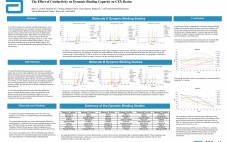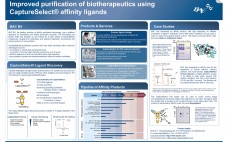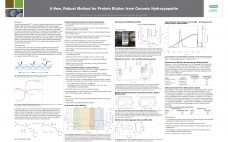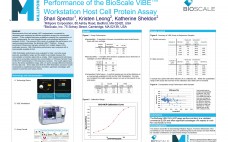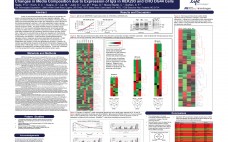Single-use (SU) components are widely accepted in bioprocessing due in part to improvements in component design, a wider range of products, and increased scalability. Benefits driving their increased use include elimination of cleaning, improved system flexibility, and reduced risk of contamination. Nonetheless, companies now question how far disposables can be incorporated into bioprocessing unit operations. Results of the second annual survey of the bioprocessing market fo single-use solutions showed that >90% of respondents considered filtration well suited for…
Downstream Processing
Engineering Analysis of Mixing in ATMI’s Bioreactors Using Computational Fluid Dynamics
The Integrity® PadReactor™ and Nucleo™ systems are a single-use bioreactors specifically designed to fulfill the needs of cell culturists. They are perfectly suited to laboratory environments, process develop¬ment centers, clinical material supply and flexible GMP manufacturing. The bioreactor vessel, which offers comparable functionality to classical stirred tank bioreactors, is a single-use bag integrating an internal paddle mixing and sparger system. This innovative bag design allows a non-invasive connection to the system. The paddle is enclosed in a medical grade ULDPE…
Viral Vaccine Manufacturing Scale Using the iCELLIstm Disposable Fixed-Bed Reactor
Viral vaccines are usually produced by anchorage-dependent cell lines. At industrial scale, these cells are either cultivated in static mode on multiplate systems (Roller bottles, Cell Factories, Cell Cube, etc.) or on suspended micro-carriers (porous or non-porous) in in bioreactors. Multiplate systems are bulky and require a lot of handling operations, whereas microcarrier cultures require numerous operations (sterilization and hydration of carriers,bead-to-bead transfers) from pr eculture to final process. However most of the currently available disposable reactors are not well…
The Effect of Conductivity on Dynamic Binding Capacity on CEX Resins
In an effort to improve the antibody manufacturing platform, newer Cation Exchange Resins were evaluated. Dynamic binding studies were conducted using 2 different monoclonal antibodies at a stable pH and varying conductivities across nine resins to determine the differences in binding capacity. DBC Studies were performed at a pH of 5 and conductivities of 5, 10 and 15 mS/cm for the nine cation exchange resins with breakthrough criteria set at 10%. While most of the resins provided excellent binding capacity…
Improved purification of biotherapeutics using CaptureSelect® affinity ligands
BAC BV – The Affinity Experts – develops novel & cost-effective solutions for affinity purification challenges. Affinity chromatography is one of the simplest and most effective methods for purifying protein therapeutics, offering reduced process steps and higher yields than non-affinity methods can provide. For standard MAb purification Protein A is a well established affinity ligand which clearly has demonstrated the benefits of a highly selective primary capture step. However, for non antibody based therapeutics and novel antibody formats lacking a…
A New, Robust Method for Protein Elution from Ceramic Hydroxyapatite
Ceramic hydroxyapatite (CHT™) is used for protein purification owing to its superior removal of all process-stream impurities (aggregates, HCP, viruses, endotoxin, protein A, DNA, etc.). At commercial scale CHT performance can be impacted due to the release of protons during elution. This proton release lowers mobile phase pH which may impact the robustness of CHT particles. We have developed a novel, patent-pending technology called the surface neutralization system (SNS), which desorbs protons from the surface of CHT prior to elution.…
Cell Culture Design Space Modeling using a Scale-Down Approach
As an industry initiative to “provide assurance of quality,” the ICH Q8 guideline proposes building quality into the design of experiments by defining the process design space within which critical product quality attributes are within an acceptable range. A characterized design space not only enhances process knowledge but also can later be utilized for process validation and regulatory filings, saving on the time and cost of additional filings if process changes are implemented in the future. Because it is neither…
Performance of the BioScale ViBE Protein Analysis Workstation Host Cell Protein Assay
Measurement of host cell protein (HCP) contaminants is essential for developing and monitoring an effective purification process for recombinant proteins. Of the multiple techniques available to quantify the concentrations of these contaminants, the most popular format uses polyclonal antisera in a sandwich ELISA. The purpose of this work is to evaluate the performance of a newly emerging technology; the BioScale ViBE™ Platform. Using an assortment of bioprocess samples selected from multiple stages of the purification process, ViBE Workstation performance was…
Integrated clarification and product capture for high titer bioreactor harvests
Clarification and capture challenges are inherent in a new cell culture process that extends the exponential growth phase of mammalian cell cultures, resulting in high cell densities and product titers. Here, we show that second generation Expanded Bed Adsorption (EBA) technology is ideal for processing such high titer, high cell density harvests. In these culture harvests, viable cell densities of > 100 million cells/mL and product titers > 10 g/L are observed routinely, using standard media and cell lines. Several…
Changes in Media Composition due to Expression of IgG in HEK293 and CHO DG44 Cells
Quality of recombinant/therapeutic proteins produced by engineered cell lines is a concern shared by both manufacturers and regulatory agencies. New assays are needed to facilitate earlier and more rapid analysis of therapeutic protein quality. Cell culture supernatant contains secreted proteins that are indicative of the cellular condition and thus are potential indicators of recombinant protein quality. This study identified changes in secreted host cell proteins (HCP) from cell pools exhibiting varying levels of recombinant antibody expression as determined by quantitative…



